25 Best Tourist Attractions to Visit in Estonia
Here is a list of the 25 Best Tourist Attractions in Estonia
1. Voru
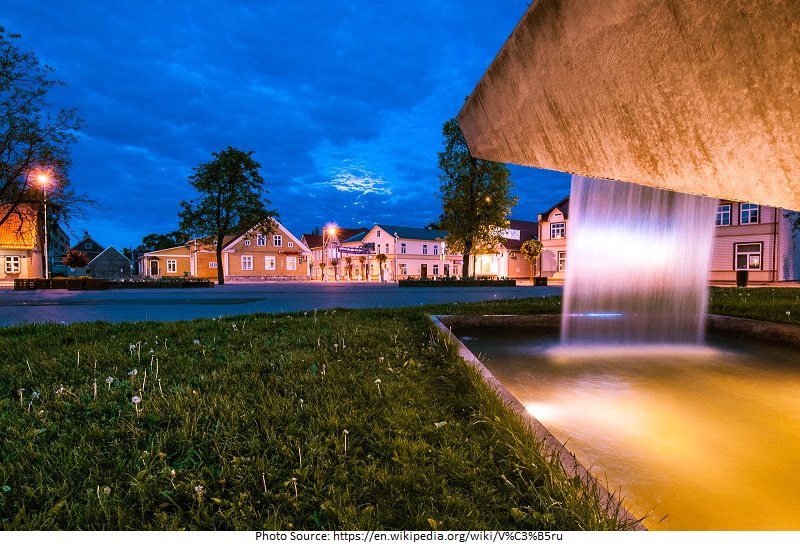
A little conventional Estonian city in the south-east of the country, Võru is located on the coast of Lake Tamula,Its best Tourist Attraction in Estonia. The city center has a unique, well-organized street design and beautiful low timbered residences. From the city center, picturesque Katariina Alley guides to the lake, its pretty beach, and famous paved esplanade. The most excellent and most charming edifice in Voru is a previous manor of the native landowner, which today contains a state secondary school. It is the most ancient edifice in Voru. If you love to know about the town’s history, you should explore Fr. R. Kreutzwald Memorial Museum or the Võru County Culture Chamber. The Võru Culture House contains a theatre, cinema, concert halls, and an art gallery. Võru is specifically amusing to travel during the winter since just an eight-minute drive will bring you to the Kubija lit skiing tracks.
Read More 25 Top-Rated Tourist Attractions in Ukraine
2. Vissandi National Park
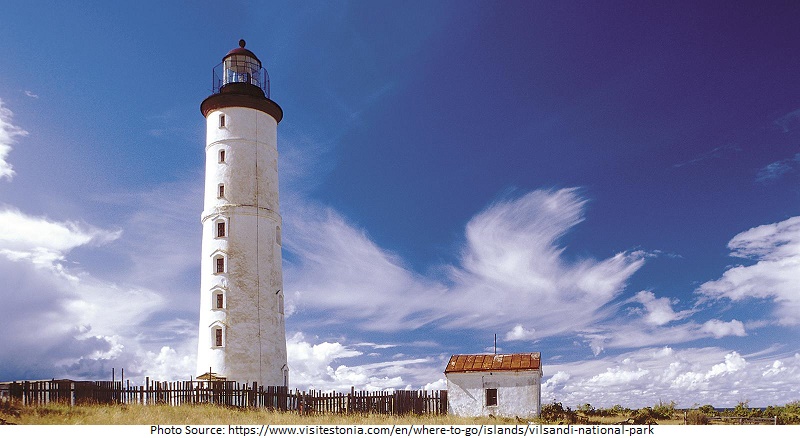
Situated in Saare County at the southern portion of Estonia, Vilsandi National Park, incorporates a section of the Vilsandi Island, nearly 150 little islands, the Harilaid peninsula, and sections of western Saaremaa. Formed in 1910, Vilsandi is the most ancient Baltic defended the region and one of the biggest Estonia’s seals resting spots. The park has 30 types of orchids and a wide number of species of juniper shrubs and fossils. The park is a picturesque hiking spot, and horseback riders can obtain a horse at the Reinu stables. As you hike, you will find innumerable spectacular lighthouses, but the islands are primarily unpopulated. The park has a wonderful tourist’s center with a wide collection of fossils. To watch the seals close up, you can catch one of some boat trips.
3. Viljandi
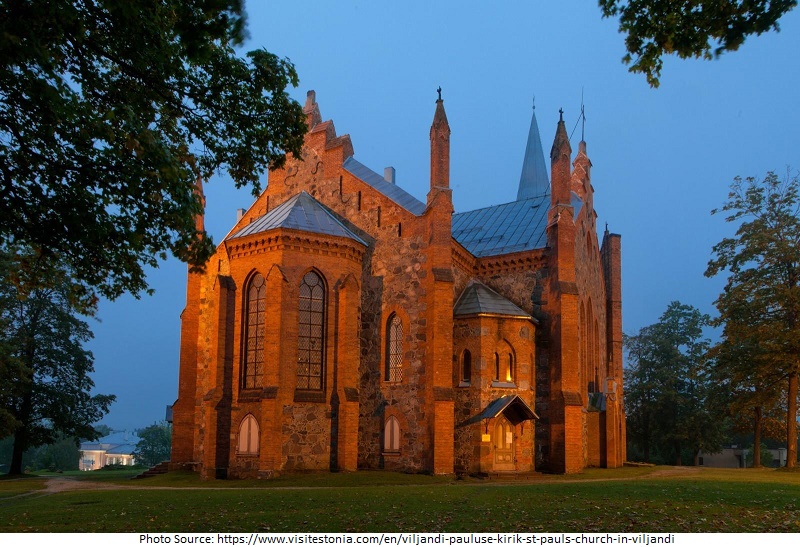
It is a very ancient city and municipality in southern Estonia that was accepted the city charter by Wilhelm von Endorpe in 1283. This beautiful small city is nestled in the shadowy depths of thick southern Estonian woods, and its marvelous castle remains, once an abode of the ruling Livonian Order, is a great amusement to visit. There is also the charming not far away lake with a beach and boats to hire and distinctive timbered architecture. Viljandi has a big, vibrant student society from Viljandi Culture Academy, who keep lively Estonian folk music and culture. During the summer, musicians can frequently be found walking the town paths singing. Summer is also the season for plenty of festivals, concerts of folk music and medieval festivals when travelers descend to Viljandi in big numbers. Right outside the town are Soomaa national park and the Olustvere manor established in the 16th century.
4. Valga
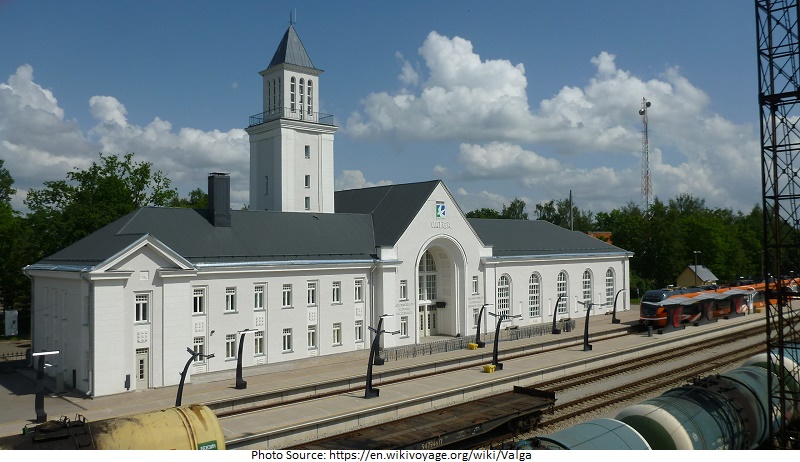
Estonia parts its southern boundary with Latvia, and the city of Valga lies in the middle of the boundary between the two countries. The city, named Valka in Latvia, is divided in half, but the countries made a consensus to dispense with the boundary and border procedures, so the tourists of Valga-Valka like capturing a picture standing next on the boundary (there is a renowned border sculpture), with one leg in Latvia and another in Estonia. Two cultures and two languages formed an amazing blend that makes the city especially unforgettable and its history captivating. Valga’s Town Hall finished in 1865, has elevated half-hipped ceiling, small towers, and skylights. The 1816 Jaani Church is situated in the middle of the town, the sole church in Estonia that has an egg-shaped ground plan. Valga Museum is a wonderful spot to know about the history of the town. The Military Theme Park is a museum with amazing displays, for instance, military transports, a tank, armed vehicles, a broad collection of arms, and much more. The Pedeli River flows through the two twin towns and has a beautiful long hiking and biking track that runs along with it.
5. Tartu
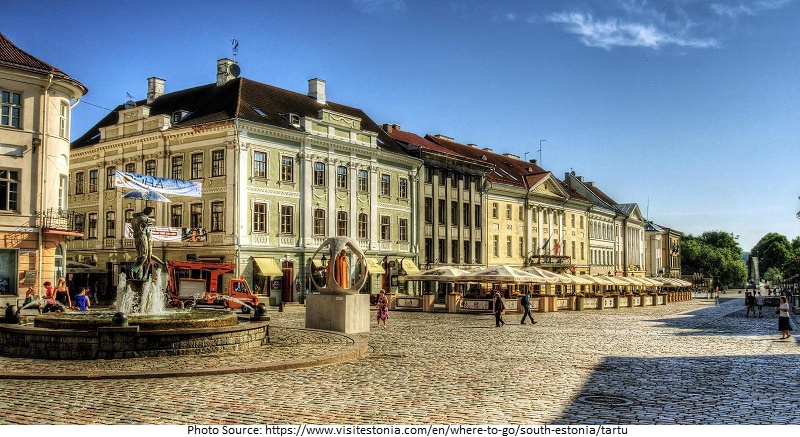
An eastern Estonian town, Tartu is renowned for its extremely distinguished, 17th-century University of Tartu. The university is the town’s pounding heart with the vibrant ambience learners always make, but you can also find the old town with the university’s wonderful main edifices in neoclassical style, and the lively Town Hall Square, well-known for the Kissing Students fountain and a wide range of entertainment and eccentric cafes. Not far away is the contemporary Science Centre with a 4D cinema and a broad range of hands-on displays. The hilltop Toomemägi Park above the town is the abode to the remains of the Tartu Cathedral, with two renovated towers and viewing platforms providing a look of the whole town. Tartu has some magnificent museums and a vibrant nightlife. Although it is the second biggest Estonian city, Tartu is quite concise and effortlessly visited on foot or on a bike.
6. Tallinn
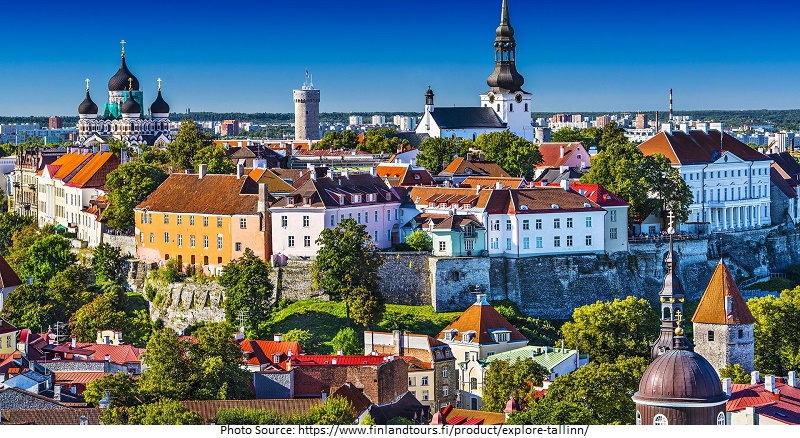
Estonia’s ancient epicenter Tallinn is situated on the Baltic Sea shore, an ideal blend of past and present. Now the country’s cultural center, Tallinn was first referred in 1154 and still has its fenced, cobblestoned Old Town, which is now filled with charming cafes and stores and all these make Tallinn a wonderful tourist attraction in Estonia. A short distance away are also Kiek in de Kök, a colossal 15th-century tower, a Gothic 13th century Town Hall with a 64-meter-tall tower, and the 13th-century St. Nicholas Church full of invaluable spiritual art. And not a far away is the city’s present day, dazzling side of skyscrapers, banks, and businesses. Let’s not neglect the charming shoreline with miles of sandy beaches and a romantic esplanade spotted with stores and eateries. The town is so green and wonderful that it is effortless to forget that until not so long before, it was under Soviet dominion.
7. Sillamae
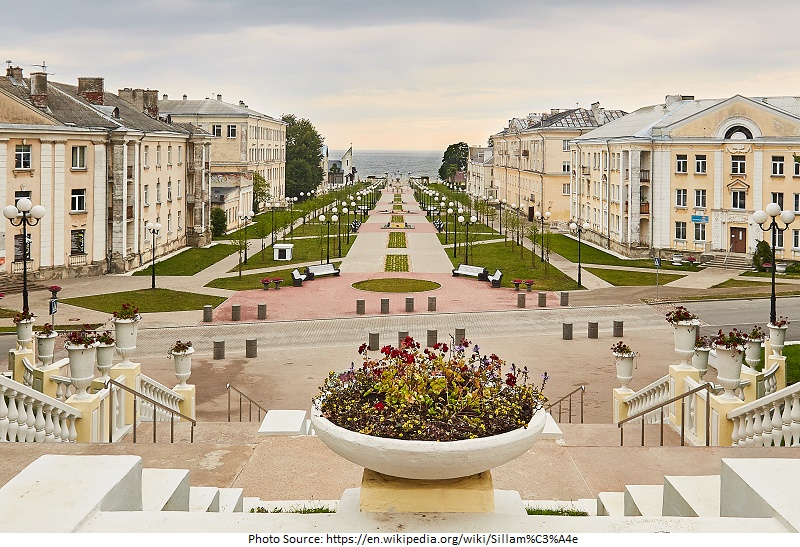
This is a city in the northern portion of Estonia on the shore of the Gulf of Finland at the mouth of Sõtke River. Until the 1920s, Sillamae was a beautiful resort village famous in the 1800s among the elite classes due to its spas and charming nature. In the 1920s, a Swedish company determined to build a metallurgy plant in the region to process regionally found oil shale. During WWII, the Germans founded some concentration camps in the region and destroyed a Swedish plant. After the war, the Russians changed the ancient plant to process oil shale into uranium oxides. For radioactive remain that was thrown away into the Baltic Sea, the regional ecology was gravely damaged, inducing the town to be shut for many years. Sillamae is even now a significant industrial hub, digging and processing uncommon metals, but is also a fascinating tourist attraction to explore with wonderful nearby nature and some big waterfalls.
8. Setomaa
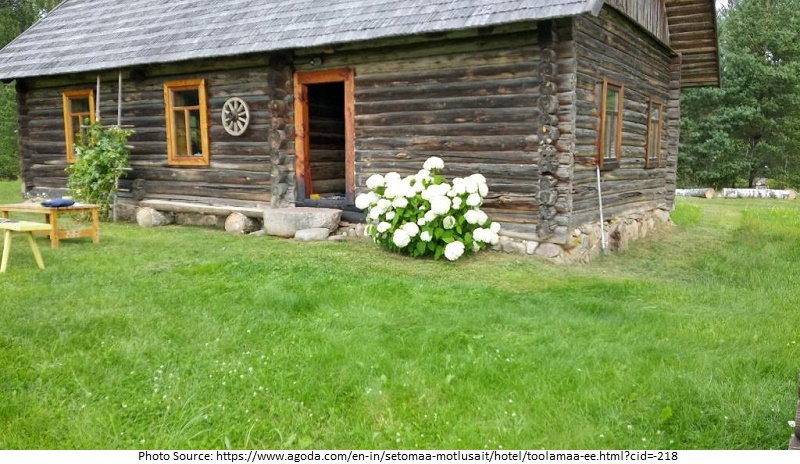
Allocated between Russia and Estonia, Setomaa is a marvelous tourist attraction in southern Estonia, south of Lake Peipus. The area is populated by the Seto people who speak the Seto language, a variation of South Estonian. The cultural and historic hub of Setomaa is Pechory. Setos managed to maintain their customs, distinctive lifestyle, language, culture, foods, and dressing traditions. They are famous for the old polyphonic singing that the new generation received from the past people and accepted. The Seto Farm Museum is a wonderful spot to know about Seto farm architecture, craftworks, and ancient tools. Relish one of the conventional smoke saunas, explore Seto Studio/Gallery to find the present day and conventional Seto art, and attempt trout fishing at the Piusa River.
9. Saaremaa
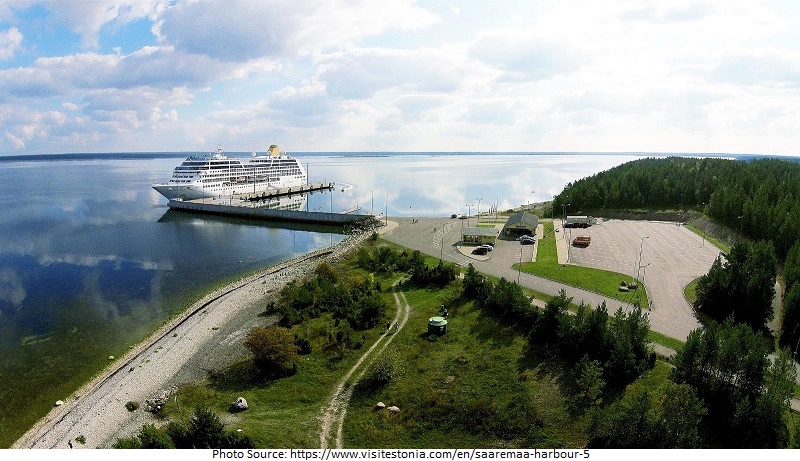
It is the 1,032 square mile island in the Baltic Sea right south of Hiiumaa island, a portion of the West Estonian Archipelago. It is the biggest island in Estonia. Saaremaa has been populated from no less than 5,000 years BCE, and it has a tumultuous history in both a natural and human perception. The meteorite Kaali hit the island more than 4,000 years before, forming a huge crater, and the region has experienced countless intruders, Vikings being the most persistent. Now, the island is a very famous leisure destination. People from all over Estonia appear here for the island’s beautiful, nearly unpeopled beaches, affluent traditions, and tremendous spa retreats. Picturesque fishing villages, conventional Estonian small houses, a huge fort in the epicenter Kuressaare, picture-perfect windmills, and distinctive wildlife make Saaremaa a beautiful spot to visit.
Read More 20 Best Tourist Attractions in Kosovo
10. Ruhnu
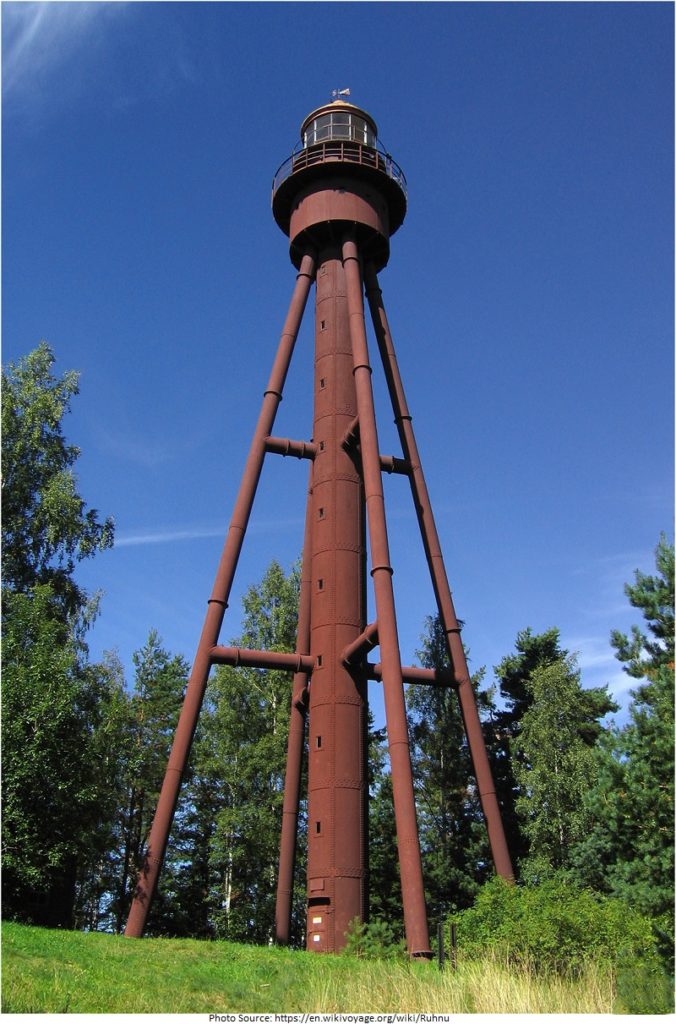
A little island Ruhnu is in the Bay of Riga nearly 11.5 square kilometers in size and about 40 kilometers off the shore of Estonia. The island was the matter of argument between Latvia and Estonia until its inhabitants determined to be part of Estonia. There is a little village in the center of the island with a beautiful timbered church established in the 17th century. The village is encompassed by deep ancient forests with plenty of uncommon tree species. The total area is a paradise for hiking, with plenty of panoramic trails crossing the island. There is permanently a lovely sea breeze fetching in the odors of the ocean. The island is dispersedly inhabited, and it is feasible to hike for hours without confronting a single man. On the eastern tip of the island is a famous Lido beach that becomes jam-packed in the summer.
11. Rakvere
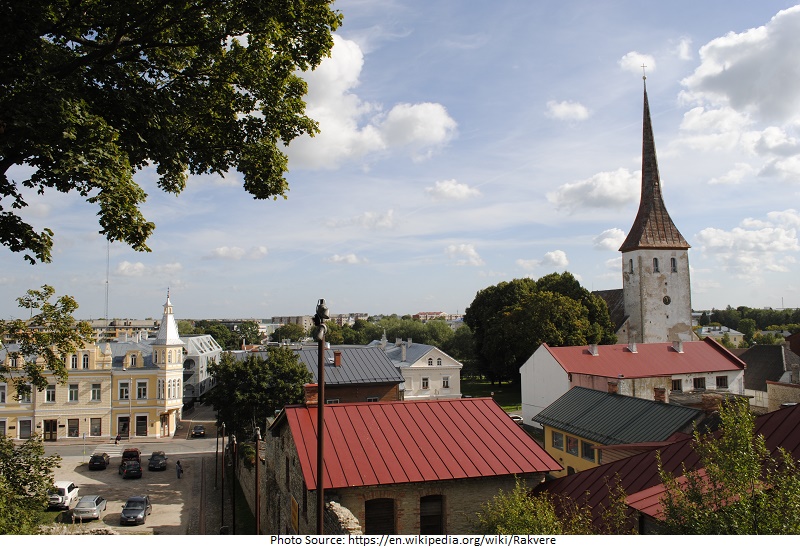
It is an ancient town in northern Estonia about 20 km south of the Gulf of Finland. Its scenery is controlled by the remains of the 13th-century fort that appears over the town. Nearby the shore and Lahemaa national park, Rakvere is a beloved leisure destination with all the present day relaxations set in picture-perfect pastoral surroundings. Rakvere is too becoming famous for its substitute edge, a wide range of punk music festivals and ceremonies. The remains of the fort have been renovated as a theme park where tourists can pass a day being costumed up as knights and medieval ladies and know about life in the Middle Ages. There is a torture cell, a wine cellar, a Red Lanterns Street, an ancient brothel, and an alchemist’s factory and all these things made Rakvere a wonderful tourist attraction in Estonia.
12. Parnu
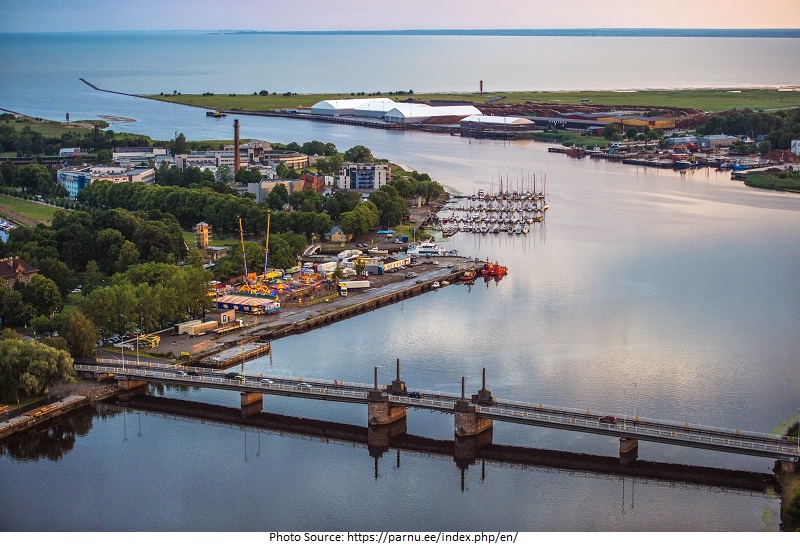
It is one of the biggest towns in Estonia and is thought to be Estonia’s summer epicenter. This medieval town is situated on the shore of Pärnu Bay in the Baltic Sea in southwestern Estonia. The Pärnu River goes through the town on the way to the Gulf of Riga. Parnu is famous for its wide sandy shores, magnificent hotels, and charming eateries. Pärnu is also familiar with all types of spas, from big water parks enjoyed by children to the closer historic bathhouses. A long broad beach is fringed by a beloved esplanade, ideal for taking a walk, jogging, cycling, and roller skating. Close to it are some playing fields, water fountains, and plenty of recreation spots for kids. For those who love more entertainment activities, there are water skiing, yachting, canoeing, or kayaking from the Pärnu river delta to the vast sea and all the way to neighboring small islands.
13. Otepaa
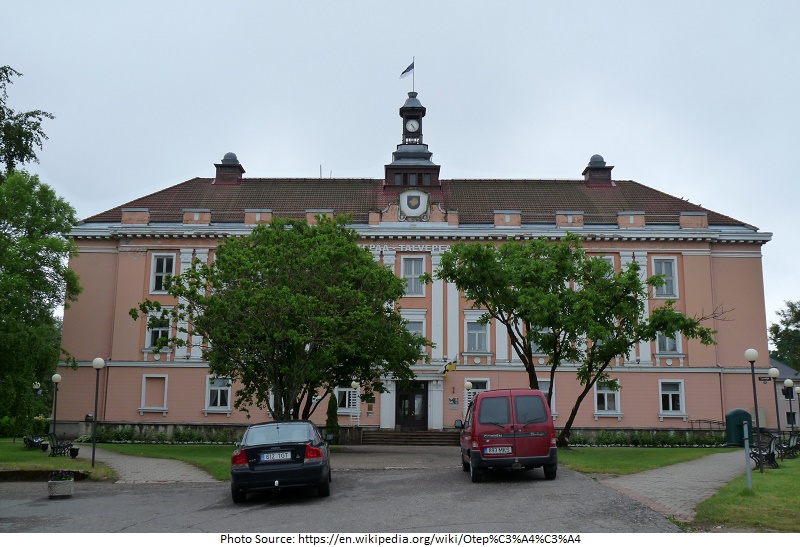
A city in Valga County in southern Estonia, Otepää is a famous Estonian winter leisure destination for those who love the snow sports. After enjoying a day of skating, skiing, snow tubing, or snowboarding, you can take some rest in one of Otepaa’s grand spas, hotels, and epicurean eateries. It is not uncommon to confront a few Olympic medalists slipping down the hill in the time of their usual training session. In the summer season, tourists can visit the panoramic hiking tracks through the Otepää nature park, through rolling hills, and by the lakes’ coasts along curving quaint village roads. The biggest lake is the adjacent Pühajärve, one of the biggest in Estonia. Camping nearby the lake in the summer is an exceptional treat for nature enthusiasts and romantic spirits.
14. Nova and Noarootsi
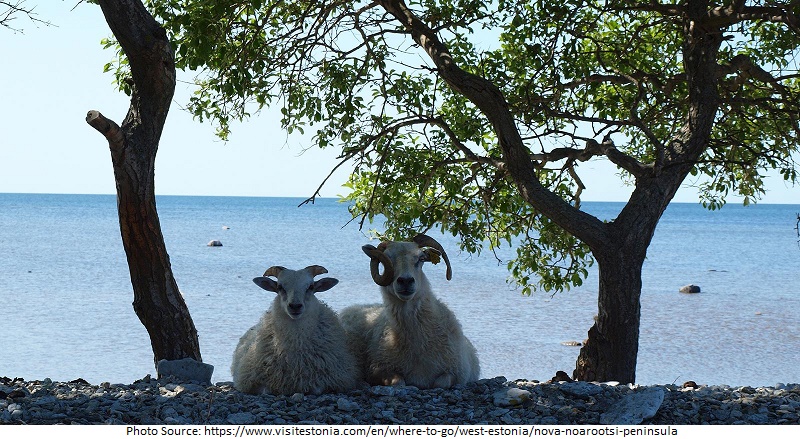
Situated close to the coastal city of Haapsalu in western Estonia, the small picture-perfect village Nõva and the charming Noarootsi Peninsula are famous tourist attractions in Estonia. These destinations are especially for those people who love kayaking, sailing, and windsurfing. In the winter, there is traveling on the ice tracks for those who love an adrenaline rush. Nõva is well-known for the tiny distinctive timbered St. Olaf’s church established in the 18th century. Noarootsi is famous for its wonderful coasts encompassed by pine woods. That total coastal region was approximately totally inhabited by Swedish-speaking people until the mid-20th century. Excluding the centuries-old Swedish tradition, there are also signs of much more late Soviet military existence in the region. Nõva is encompassed by three nature reserves, reserved territories for native plants and animals. The total spot is remarkable for observing guest birds.
15. Narva
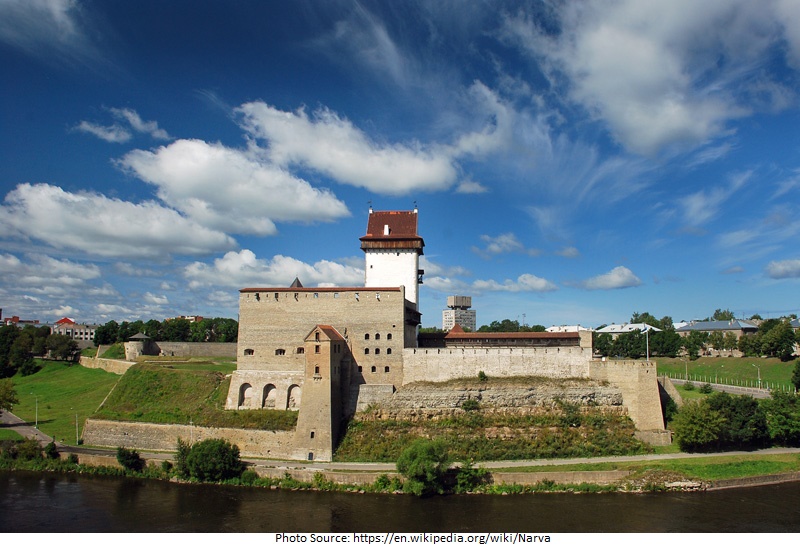
Situated at Estonia’s easternmost tip at the Russian boundary on the Narva River, Narva is one of Estonia’s biggest towns and famous tourist destination. From Narva, you can get a magnificent look of Russia, and the finest watching spots are situated at Narva castle on one river bank and Ivangorod fortress on the other. The nature outside the city is breathtaking, and there are hiking tracks that range from ascending the Sinimäe hills to the 12-kilometer hike to the Narva-Jõesuu coastal resort, with very charming white sandy beach encompassed by pine woods. Because of its situation, Narva has always been an important center of cultures, which is absolutely clear by the distinctive architecture in the town. The 13th-century fort, a baroque Town Hall, the thoroughly protected system of protections bastions, and much more form Narva a very distinctive tourist attraction in Estonia. There is also always some type of concert, carnival or open-air show continuing on.
16. Matsalu National Park
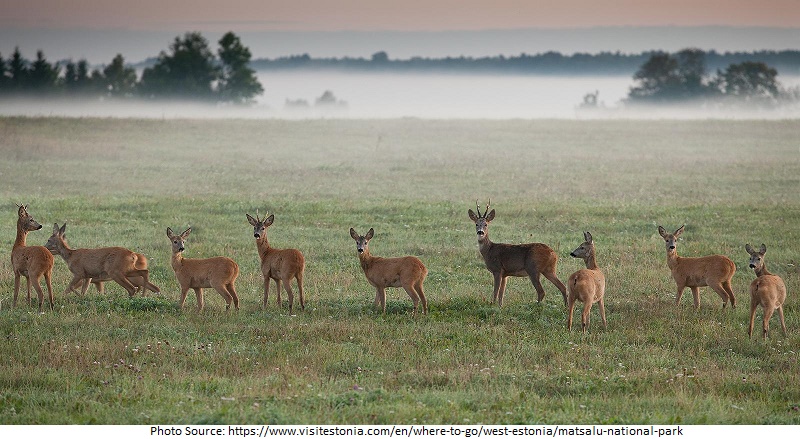
This park is a 48,610-hectare nature conserve and park established to save a good number of migratory, nesting, and molting birds. The region, situated in western Estonia, consists of Matsalu Bay, the delta of the Kasari River, and the neighboring regions. The park is specifically significant because it is situated in the main portion of the East Atlantic Flyway. Every spring, over two million waterfowl go through Matsalu. The park is a perpetual abode for a number of extremely rare species, for instance, the white-tailed eagle. Matsalu is well-known among bird observers, and every year people from all over Europe come to watch and photograph birds and have a stress-free time in the unharmed nature. There is a number of tracks crisscrossing the park. Apart from hiking and biking, the park can be visited by boat as well. Several bird-observing-towers are dispersed throughout the park to ease seeing birds without harming them and their nests.
17. Lake Peipus
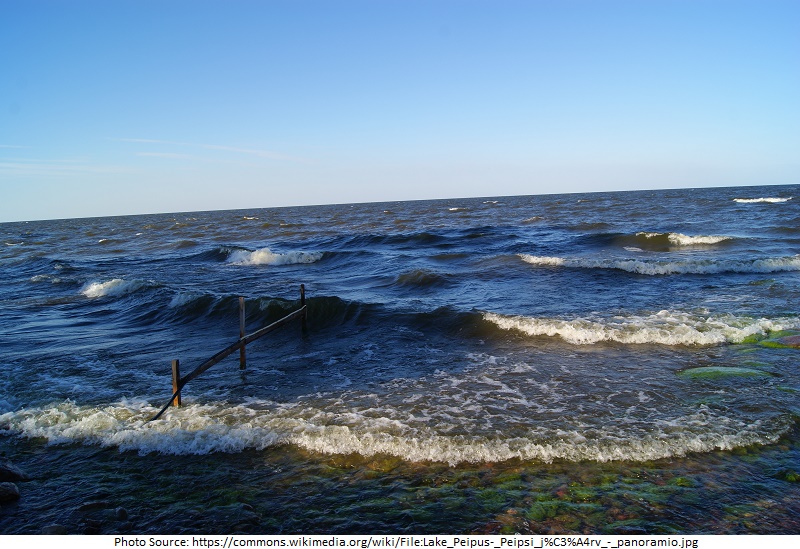
This lake is situated on the boundary between Russia and Estonia and is one of the biggest lakes in Western Europe. Its varied nature, conventional culture, an abundance of fish, and beautiful country roads make Peipus region a beloved leisure destination. The shores around the lake are captivating to explore, with a blend of residences, conventional markets, lighthouses, and picture-perfect conventional cottages. The region surrounding the lake is the abode to Old Believers, a religious minority of industrious fishermen, architects, and onion farmers. The lake’s average deepness is 7.1 meters and the deepest area is 15 meters. The lake has some islands and is neat and reasonably clean, as nearly 30 streams and rivers flow fresh water continuously. Peipus is encompassed by immense swamps, sand dunes, and hills coated with deep pine woods.
18. Kuressaare
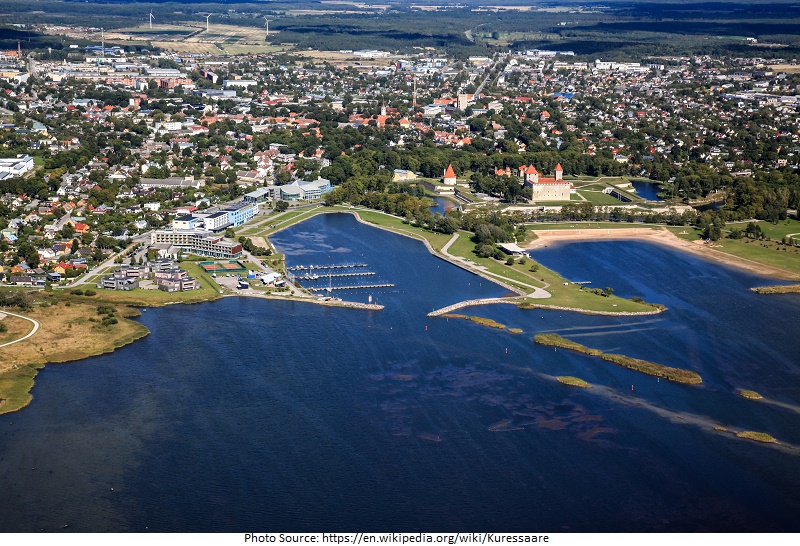
Also famous as Arensburg, Kuressaare, is an extremely picture-perfect little city on Estonia’s Saaremaa island and the country’s westernmost city. Situated on the shore of the Gulf of Riga on the Baltic Sea, it is linked to the mainland via the Kuressaare Airport and two harbors – Roomassaare Harbor and Kuressaare Yacht Harbor. The medieval Kuressaare Castle established in the 14th century is now the abode of the Saaremaa Regional Museum and is encompassed by a broad, picturesque moat. The city hall, which was established in 1654, was cautiously renovated to maintain its baroque and classicist characteristics. Town’s St Nicolaus Church was established in the late 18th century. In the 19th century, Kuressaare was a beloved seaside resort, and it is now familiar due to its spas.
19. Korvemaa Nature Reserve
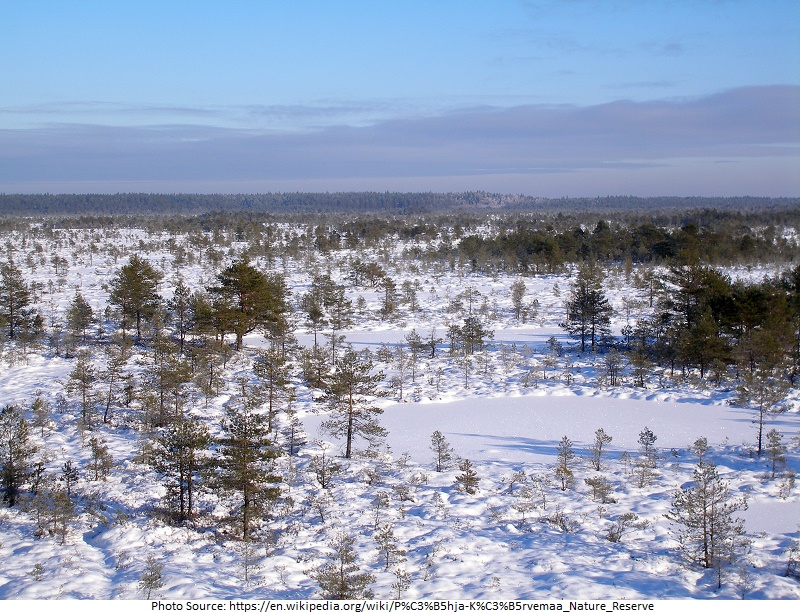
Korvema nature reserve is a famous leisure destination for souls seeking a distinctive landscape and charming, unharmed nature. It is situated in northern Estonia just 50 km from Tallinn. Covered by lakes, woods, and swamps, this park is a paradise for nature enthusiasts with well-kept timbered tracks through strange marshes, sheer hills, and sandy roads. Kõrvemaa is beloved during the winter as well and has a web of wonderful cross country ski tracks. It is an abode to a number of defended and endangered species of wild beasts and birds. If you are fortunate, you might locate bears, wolves, or wild lynx.
20. Kihnu
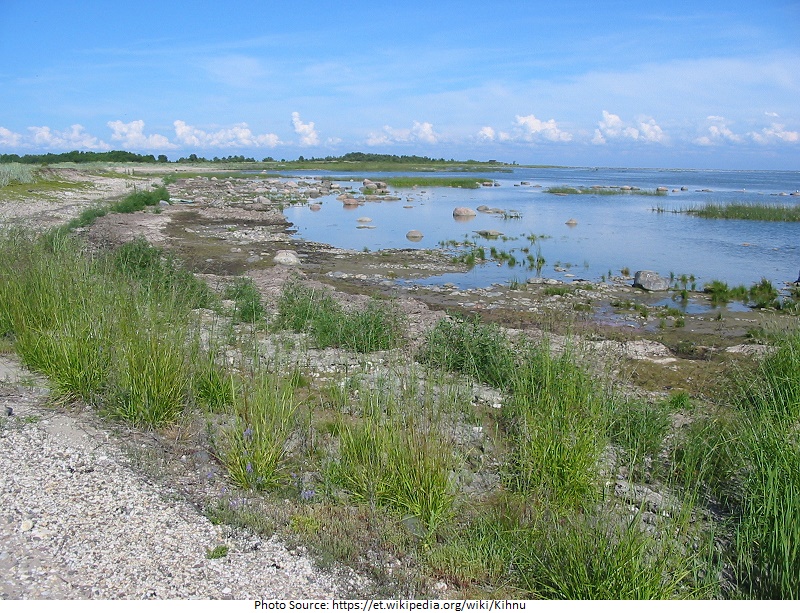
It is the biggest island in the Gulf of Riga and Estonia’s seventh biggest island. For the final six centuries, the island has been the abode to a distinctive native culture that has flourished off the shore of Pärnu County. There are four villages on Kihnu Island. Lemsi Village, situated in the most eastern portion of the island, has a port that offers the key link between the island and the mainland. The Kihnu Museum is situated in an ancient schoolhouse and a wonderful spot to know about the island’s spectacular history and to see artwork by regional inexperienced artists. Explore Kihnu lighthouse, situated on Pitkänä Cape at the southernmost tip of the island, encompassed by spectacular boulders and providing breathtaking looks.
Read More 25 Most Favorite Tourist Attractions in United Kingdom
21. Hiiumaa
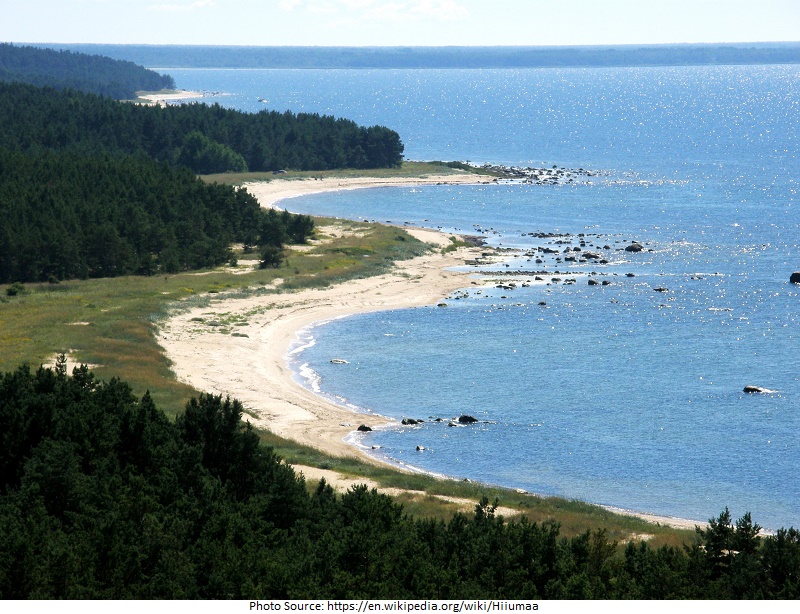
An Estonian island in the Baltic Sea, Hiiumaa is renowned for its unharmed and distinct nature. It is a portion of the West Estonian archipelago. There are several beautiful sandy shores on the Tahkuna Peninsula, situated in the most northern portion of Hiiumaa. The 16th-century Kõpu lighthouse is one of the most ancients on earth. Enjoy a delightful hike through the wilderness of the neighbouring island of Kassari, travel around Hiiumaa on the old sailing ship Lisette, enjoy a kayaking tour around the countless tiny islets around Hiiumaa, attempt some Hiiumaa beer at the Kasari brewery, and hike through the unharmed nature of the Vanajõe Valley, where you will see it all in one spot: rivers, lakes, hills, and valleys.
22. Haapsalu
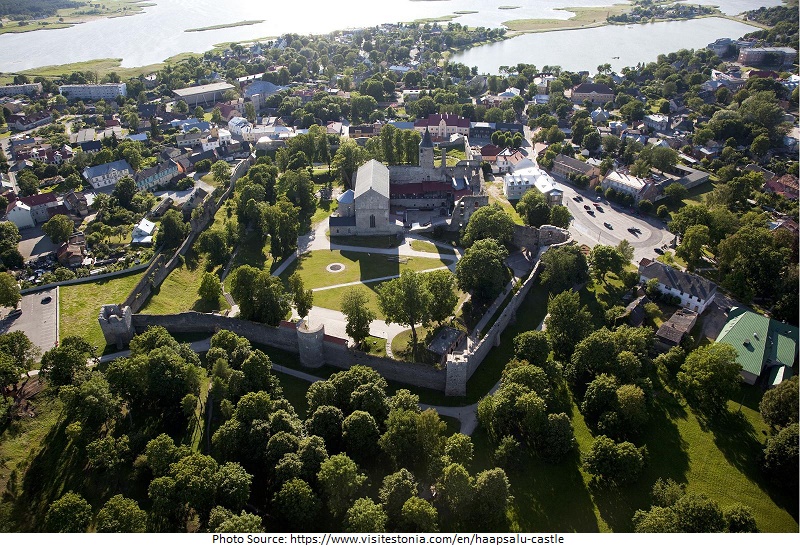
A little beautiful seaside resort city on the west shore of Estonia, Haapsalu is nearly two hours from Estonia’s epicenter Tallinn. Haapsalu has been a beloved resort destination for the Russian higher classes for centuries and persistently captivating travelers with its charming atmosphere, beautiful architecture, wonderful beach, and magnificent eateries. Visit Haapsalu by walking along its picturesque slender paths in the Old Town, a small but ornate city hall and old timbered residences. The seaside esplanade is famous for long afternoon walks. Have a glance at Kuursaal, one of Estonia’s most beautiful timbered edifices. Know more about the city history at the splendid 13th century Haapsalu Castle Museum and unwind in the park presenting a renowned sundial.
23. Alexander Nevsky Cathedral
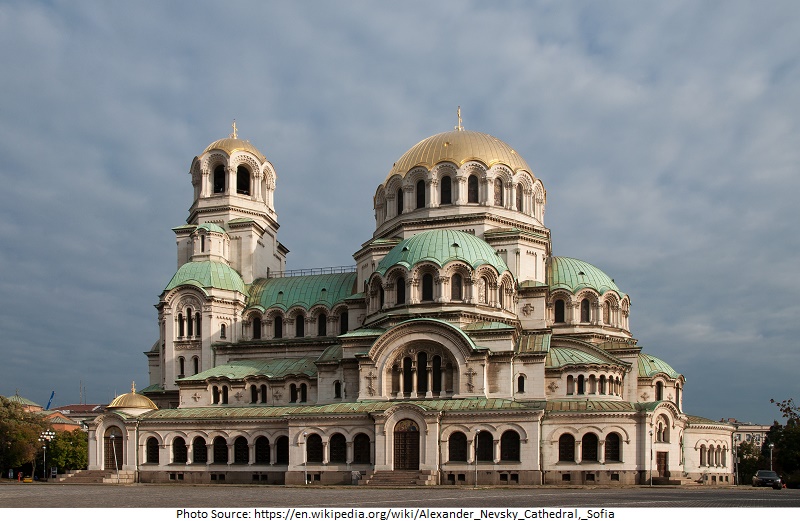
Established around the late 1800s by designer Mikhail Preobrazhensky, the Alexander Nevsky Cathedral in Tallinn Old Town is the city’s most magnificent and biggest orthodox cupola cathedral. It is constructed in a unique Russian Revival style, mainly because it was made while Estonia was a portion of the Russian Empire. Tourists will see a lot of thrilling particulars in the inner sides and the outer side of the cathedral; there are also eleven wonderfully adorned bells in the cathedral, with the biggest one having a weight approximately 16 tons. Other features of the cathedral that shouldn’t be missed incorporate its religious mosaics, colored glass windows, and the three gold-painted and engraved timbered iconostases.
24. Estonaian History Museum
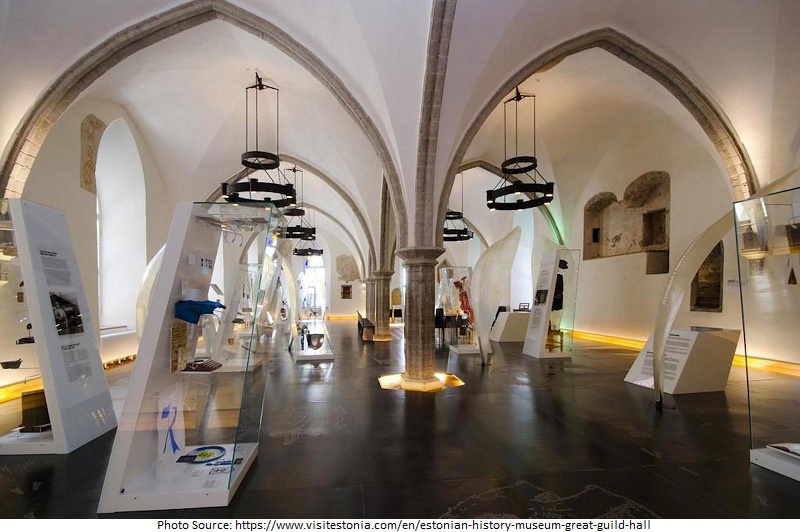
Though the Estonian History Museum wasn’t formally named so until 1989, its inception dates back to 1802 when Johann Burchard, the city hall pharmacist, began a number of marbled Easter eggs named Mon Faible, or “My Weakness.” Over the years, the museum got larger more and more rapidly, and tourists will see plenty of displays that describe Estonia’s history visually. Some of the displays incorporate restoration of domestic interiors, historically clothed mannequins, and a number of army uniforms and arms from the 1940s and 50s. One of the more famous displays is a genuine hut that was utilized by the Forest Brothers, freedom-fighters who executed guerilla war during the Soviet occupation.
25. Jagala Waterfall
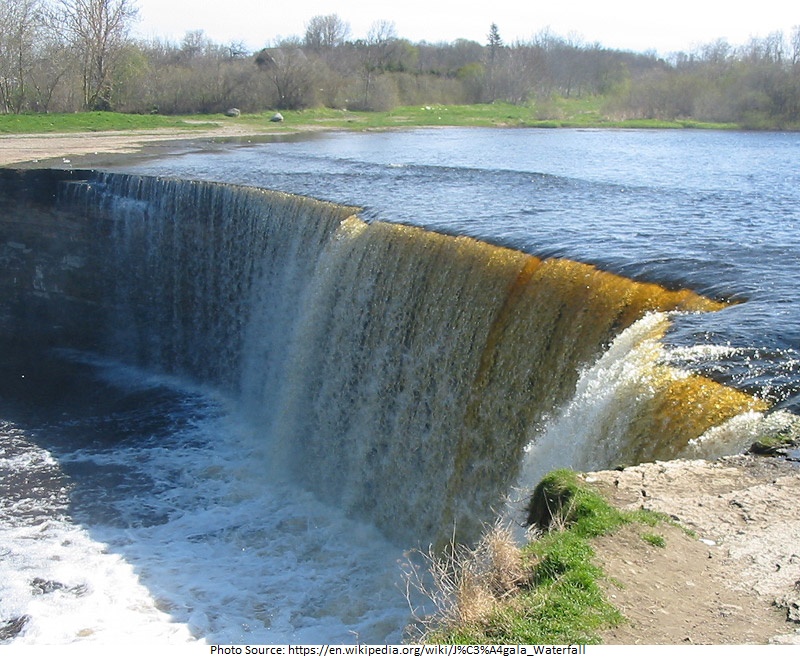
The Jagala Waterfall bears the record for being Estonia’s loftiest and broadest natural waterfall with an elevation of eight meters and a breadth of fifty meters. The waterfall is created from the Jagala River and finally falls into the Gulf of Finland. Tourists will have a wonderful look no matter which time of the year they determine to explore Jagala Waterfall; during the summer the waterfall runs into the rich greenery that encompasses it. But tourists who visit during the winter season will see the big waterfall chilled solid and stuffed with big, shining icicles. One of the more amusing features of the waterfall during winter is that the water chilled into icicles from the waterfall and the iced water on the wall of the waterfall forms a distinctive passage of ice that is completely extraordinary.
